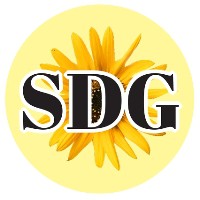
Organize your own local swap for Jan. 28

Get those excess seeds working in someone else’s garden — swap them! Kathy Morrison
It’s a January gardener preoccupation: Seed shopping. Whether browsing catalogs or online websites, we are constantly tempted by “new and improved” or “best ever” varieties as well as vegetables or flowers we’ve never seen before.
The result? Quite often, we accumulate too many seeds! It's time to do some seed swapping.
Saturday, Jan. 28, is National Seed Swap Day, a coast-to-coast gardener initiative to get more seeds and gardens growing.
To be held on the last Saturday of each January, National Seed Swap Day was launched by Washington Gardener magazine, a mostly online publication dedicated to gardening in the nation’s capital and surrounding areas. It has an official website, https://seedswapday.blogspot.com/, which lists upcoming seed swaps and encourages others to share their unwanted (or unplanted) packets.
National Seed Swap Day is local and totally grassroots. Gardeners in any kind of group – community garden, club, church, neighborhood, work, etc. – set a time and place, then bring their excess seeds. They can break down a packet (do you really need 30 of the same tomato variety?) or trade last season’s seeds that are still viable. Seeds are packed fresh for each season for maximum germination rate, but most vegetable, herb and flower seeds remain viable for at least two or three years.
It’s likely other gardeners will appreciate those seed swap offerings.
U.S. nurseries and seed distributors are still catching up with record demand for garden seeds. During the pandemic, major seed houses such as Peaceful Valley Organic sold out of almost all their stock, frustrating many gardeners.
According to the National Garden Bureau, seed customers should find better inventory this season – but get your orders in early – then be patient.
“Seed companies are likely to experience delays in times of high demand so be aware of that company’s current timeline for shipping,” advises the bureau. “They will be transparent. Sign up for or subscribe to that company’s communications to stay informed and up-to-date.”
Seed demand is expected to remain high all year, says the bureau, so go ahead and order your fall seeds now along with seeds for spring and summer planting.
“Don’t buy just for spring because succession sowing is important for season-long harvest and there are wonderful vegetables like cabbage and kale that are great for fall plantings,” the bureau says.
For more about seeds and seed shopping, check out these tips from the National Garden Bureau: https://ngb.org/2021/01/28/ask-the-experts-about-seedfacts/.
For more on National Seed Swap Day: https://seedswapday.blogspot.com/.
Comments
0 comments have been posted.Sacramento Digs Gardening to your inbox.
Sites We Like
Garden Checklist for week of April 21
This week there’s plenty to keep gardeners busy. With no rain in the immediate forecast, remember to irrigate any new transplants.
* Weed, weed, weed! Get them before they flower and go to seed.
* April is the last chance to plant citrus trees such as dwarf orange, lemon and kumquat. These trees also look good in landscaping and provide fresh fruit in winter.
* Smell orange blossoms? Feed citrus trees with a low dose of balanced fertilizer (such as 10-10-10) during bloom to help set fruit. Keep an eye out for ants.
* Apply slow-release fertilizer to the lawn.
* Thoroughly clean debris from the bottom of outdoor ponds or fountains.
* Spring brings a flush of rapid growth, and that means your garden is really hungry. Feed shrubs and trees with a slow-release fertilizer. Or mulch with a 1-inch layer of compost.
* Azaleas and camellias looking a little yellow? If leaves are turning yellow between the veins, give them a boost with chelated iron.
* Trim dead flowers but not leaves from spring-flowering bulbs such as daffodils and tulips. Those leaves gather energy to create next year's flowers. Also, give the bulbs a fertilizer boost after bloom.
* Pinch chrysanthemums back to 12 inches for fall flowers. Cut old stems to the ground.
* Mulch around plants to conserve moisture and control weeds.
* From seed, plant beans, beets, cantaloupes, carrots, corn, cucumbers, melons, radishes and squash.
* Plant onion sets.
* In the flower garden, plant seeds for asters, cosmos, celosia, marigolds, salvia, sunflowers and zinnias.
* Transplant petunias, zinnias, geraniums and other summer bloomers.
* Plant perennials and dahlia tubers for summer bloom.
* Mid to late April is about the last chance to plant summer bulbs, such as gladiolus and tuberous begonias.
* Transplant lettuce seedlings. Choose varieties that mature quickly such as loose leaf.